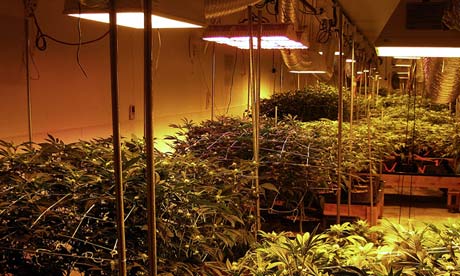![]() In a nondescript, unmarked warehouse in Denver’s industrial outskirts, row upon row of marijuana plants – ranging from little cuttings to tree-like bushes – extend into virtual cannabis forests. A tropical atmosphere comes from carefully regulated humidity and lighting controls in each room, assisted by fans and vents.
In a nondescript, unmarked warehouse in Denver’s industrial outskirts, row upon row of marijuana plants – ranging from little cuttings to tree-like bushes – extend into virtual cannabis forests. A tropical atmosphere comes from carefully regulated humidity and lighting controls in each room, assisted by fans and vents.
This “grow” facility belongs to medical marijuana center Denver Relief, and it boasts something else besides healthy buds: state-of-the-art LED technology that offers the potential to dramatically cut energy consumption, not only for marijuana, but also for other large-scale commercial agriculture.
After decades of history as an outlawed business, complete with incidents of violence and destruction, the US marijuana industry is maturing. While possessing and selling marijuana is still a federal crime, medical marijuana is now legal in 20 states, plus Washington DC, which together make up more than one-third of the country. Beginning in January, the states of Washington and Colorado will also legalize the recreational use of cannabis for adults.
Read more: Greener marijuana: can a budding industry grow sustainable agriculture?

